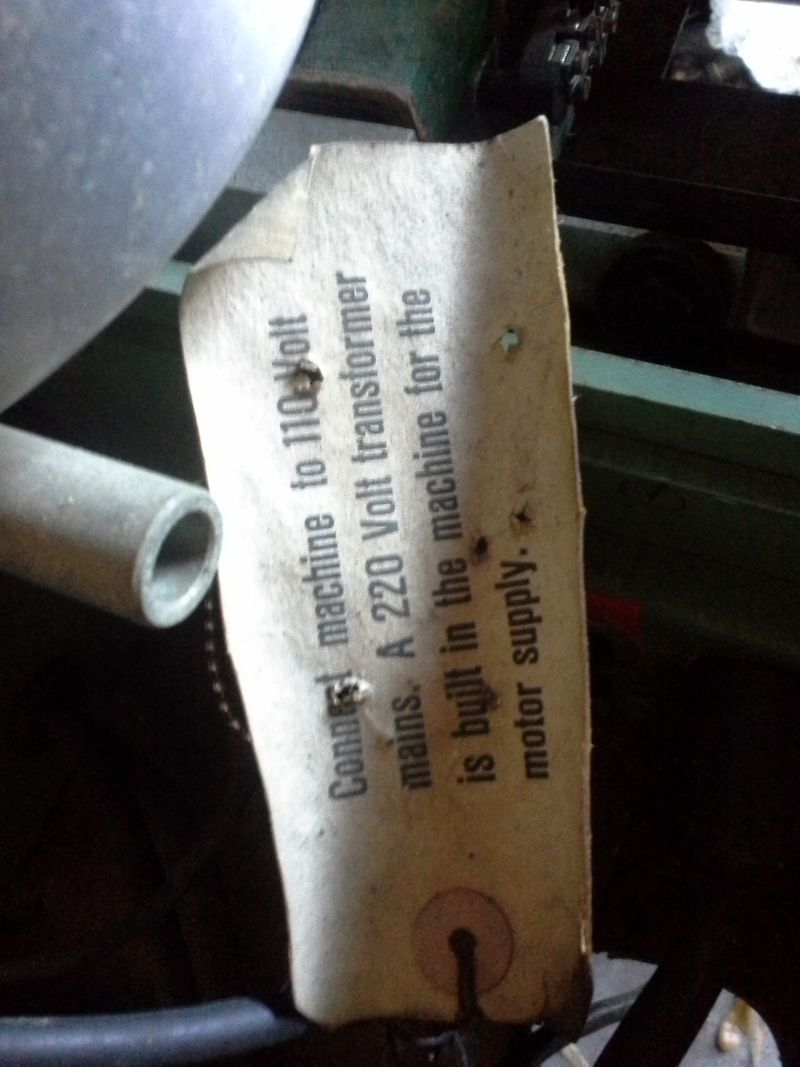Hi, a friend of mine bought an old Meteor ME 301 winding machine. None of us have any experience with winding transformers. Maybe someone here with this machine can make a basic video tutorial showing how to work with those machines?
Announcement
Collapse
No announcement yet.
Intro and a Winder Meteor ME301
Collapse
X
-
Hello Tim. I have an ME 301 B, too, that i have been restoring. Hope yours is going well. PM me and we can keep in touch.
I recently had to fix the relay module for the indicator lights by tracking down the proper relay specs and ordering a replacement from Mouser. I also found a lower cost fix to the friction wheel with the same specs as the original. Let me know if you are having success witht the restoration.
rdur
Leave a comment:
-
-
I suggest you contact Meteor (info@meteor.ch) for the winder and tensioner manual. I did that three years ago for ME307 manual. They were very responsive, I received the manual next day.
Leave a comment:
-
Is there a patent number anywhere on it? That's your best bet for figuring them out. I do recall seeing patents.Originally posted by MBL View PostThanks for the info! here's a little better pic of what all the tensioner has with it. I'd for sure need to replace the plastic pulleys, but is this not something I could have made?
Leave a comment:
-
-
I'm running an ME484 and sometimes ME483 for tension on my Geo Stevens...looks like yours is toast. Parts are impossible to find and expensive when you do (like all these machines right?) so you might have better luck trying to run the yellow thing for tensioning. If you do manage to get parts for the 484, I can explain how it works and show you the wire path. It's a bit weird but a fantastic piece of machinery with few drawbacks.
From the pic, your one pulley is destroyed and it looks like you're missing the dancer arm and tensioning swing pulley that sits to the upper/rear.
Leave a comment:
-
For pickup winding with 42 and 43 AWG wire you should be setting your tension at or near the lowest tension -around 15g max. I find that 7-8 grams is plenty.
The knob that shall-not-be-turned is the one that sets the traverse pitch or turns per layer if you will.
Leave a comment:
-
Completely mechanical tensioners typically have a mechanical brake retarding the rotation of a capstan around which the wire being fed is wrapped and a dancer arm that adjusts the drag on the capstan such that the wire tension is more or less constant. If the tension is too high, the arm is pulled towards the spinning bobbin, loosening the brake reducing the tension. There are a million designs.Originally posted by Jim Darr View PostMost of the tensioner systems are some type of spring loaded mechanism. I am not familiar with these you show, so I can't really offer any insight. The units that came with some of my winders were typically spring loaded and, IMO, hard to get a constant pressure on the wire. Maybe some of the other members can chime in. I have come up with a system using felt pads I use for my different winders that seems to work well.
For this machine my insight really is in the drive friction wheel area as the ME301 is almost identical in principle to a machine that I have.
Leave a comment:
-
Thanks. I sent an email to the folks that seem to have that rubber part. we'll see what they come back with. The voltage I'm keeping dialed at 110 for now until I learn otherwise. I figure it's safer that way.
I'm a little confused about how the foot control works. it seems different depending on if you have the ball end rod hooked up or not.
I likely will be buying the manual soon. hopefully it clears up some of this mystery for me.
It seems to be a high quality machine although I think perhaps overengineerd to an extent. Looking forward to getting some bobbins wound.
Tim
MBL
Leave a comment:
-
Tim,
Great pics. Most of the tensioner systems are some type of spring loaded mechanism. I am not familiar with these you show, so I can't really offer any insight. The units that came with some of my winders were typically spring loaded and, IMO, hard to get a constant pressure on the wire. Maybe some of the other members can chime in. I have come up with a system using felt pads I use for my different winders that seems to work well.
For this machine my insight really is in the drive friction wheel area as the ME301 is almost identical in principle to a machine that I have.
Concerning the electrical portion of your winder, be extremely careful, especially with a transformer converting 110 to 220 volts as your last picture shows. Use extreme caution as some electrical components, like capacitors, can contain lethal voltages even with the power off and the unit unplugged. Only inspect the electrical systems and work on it yourself if you are well qualified and knowledgeable to do so.
Hopefully others here will offer their perspectives on the set up of this machine and trouble shooting it.
Keep us posted on your progress
Leave a comment:
-
-
The discs appear to be in perfect shape. there is some goo on them but no grooves. I'll see about grabbing up a new wheel. Then I need to figure out some of the other functions. I'm moving pretty good so far thanks to you and reading the forum.




Tim
MBLLast edited by MBL; 04-09-2016, 09:43 PM.
Leave a comment:



Leave a comment: